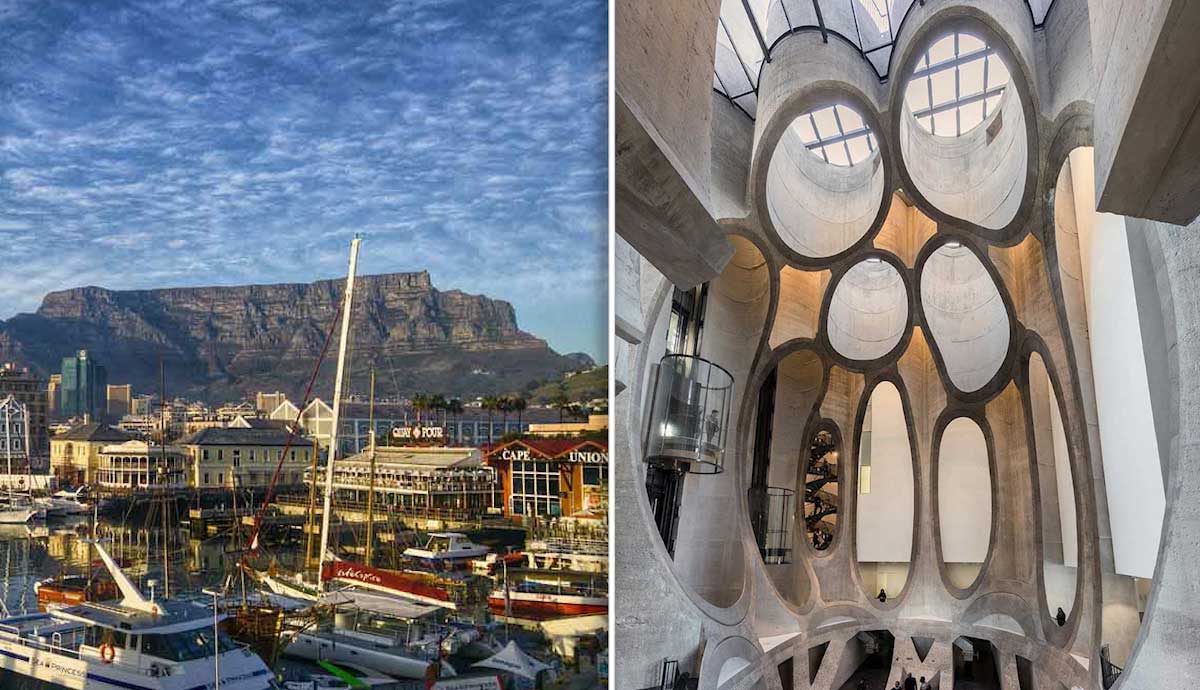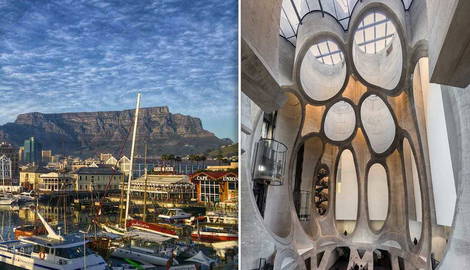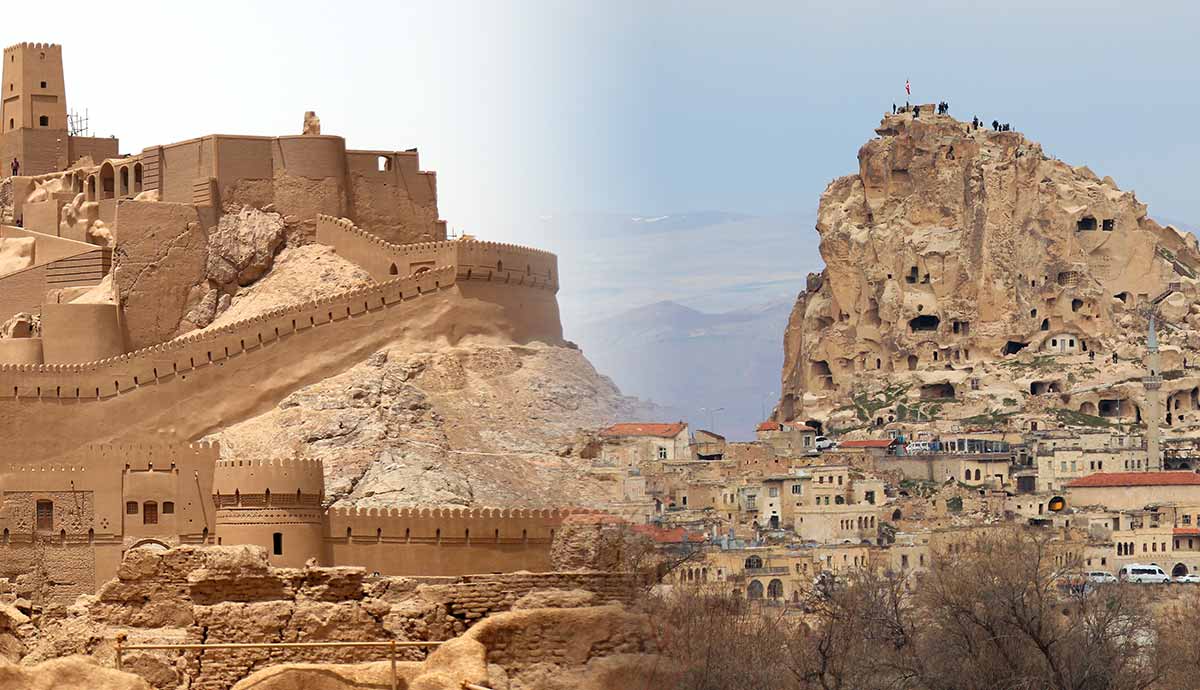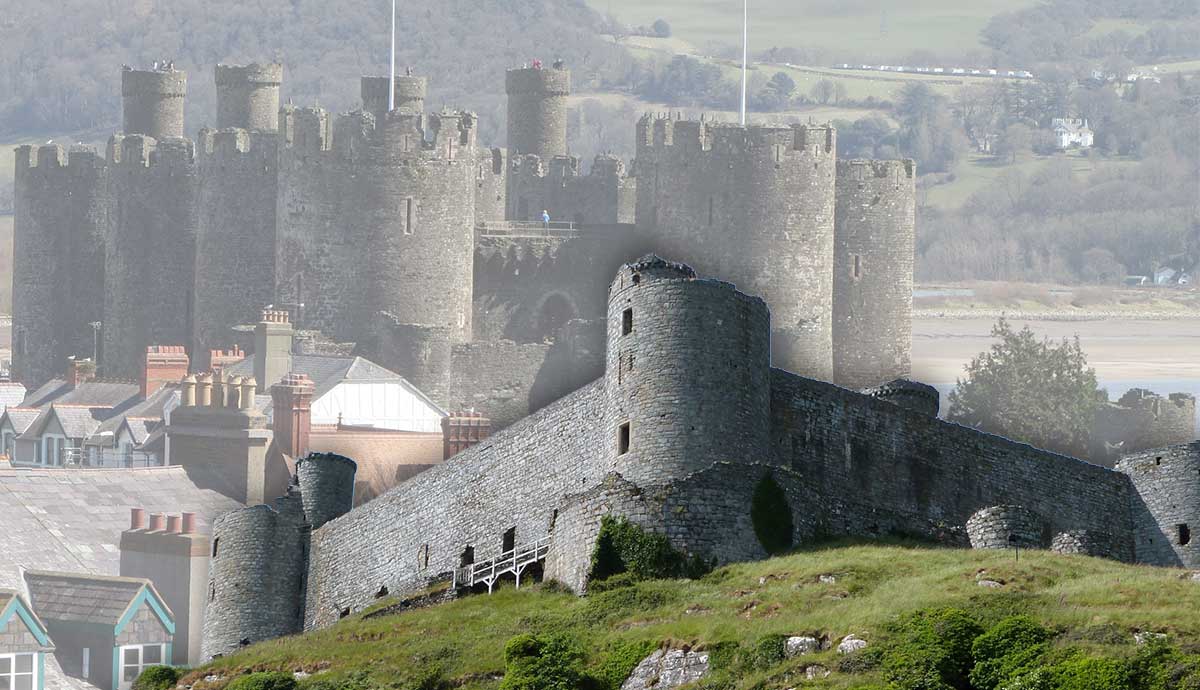
It is a challenge to define what constitutes a country’s cultural capital, but Cape Town is considered by many to be not just the cultural capital of South Africa but of all of Africa. It represents a confluence of many cultures from both Africa and Europe. With its vibrant multicultural mix of people and styles, Cape Town is an attractive tourist destination for those wishing to experience a vacation focusing on art and history.
Cape Town is dotted with museums and cultural landmarks within a small area, many of which are within walking distance of one another, and as such, it is easy to get a comprehensive experience of the city in a relatively short space of time.
But even when leaving the Central Business District or the “City Bowl” as it is called, there is still no shortage of experiences to be had in this regard.
Here are 6 historical and artistic places to visit in South Africa’s Mother City.
1. The Castle of Good Hope

Considered the center point of Cape Town, the Castle of Good Hope is the oldest building in South Africa and is still in use today as a historical site, art gallery, and military base. Unsurprisingly, it draws a lot of attention from tourists who wish to understand the early history of Cape Town.
Built by the Dutch East India Company (Vereenigde Oost-Indische Compagnie / VOC), the first stone of this five-pointed star fortress was laid in 1666, and construction was finished in 1679. From this fortress, the Dutch exercised power and control over their colony in the Cape.
For the people of Cape Town, the Castle served as a rallying point and a town center where announcements were made. At the beginning of the 19th century, it was taken over by the British, who conquered the Cape Colony from the Dutch.

Almost one hundred years later, it was used as a prison during the Second Anglo-Boer War, and throughout the 20th century it was used as a military headquarters. Today, the castle houses a military history museum and serves as the home of the Cape Town Highlanders, a mechanized infantry regiment of the South African National Defence Force.
Most of the structure is open to the public, and it is a big tourist attraction for foreigners and locals alike who wish to discover the history of Cape Town. Military ceremonies and other special functions also appear in the courtyard, providing entertainment for visitors.
Walking along the ramparts provides a 360-degree view of the surroundings and includes the ominous prison cells where visitors can experience what it was like to be locked up inside. The museum contains paintings, dioramas, and displays of the history of Cape Town from all eras of its past.
2. The Zeitz Museum

Located in the Victoria & Alfred Waterfront on the northern edge of the City Bowl, the Zeitz Museum of Contemporary Art Africa is the world’s largest museum of art from Africa and its diaspora. Receiving over 20 million visitors a year, the Zeitz Museum is a focal point for art enthusiasts visiting Cape Town, as well as for those who live in the city, as the museum is constantly hosting new exhibitions in addition to the permanent ones on display.
It’s not just the art that attracts visitors. The building itself is a work of architectural genius. In the early 1920s, construction finished on a series of connected grain silos. This formed the basis of what would become a museum after it fell into disuse many decades later.
The architects, Thomas Heatherwick and his team, wished to preserve the industrial heritage of the building and carved several rooms, including a large atrium, out of the existing concrete. Topped with pillowed glass panels to allow natural light to stream in, the museum’s interior has the atmosphere of an industrial cathedral. As such, the Zeitz Museum is a notable work of brutalist architecture.
3. Robben Island

For a more sobering experience, delving into the country’s troubled past during the apartheid era, visitors can visit Robben Island, several miles off the coast. It served as a maximum security prison until 1991 and is famous for being where many of the stalwarts in the struggle against apartheid were imprisoned, including Nelson Mandela.
A 3.5-hour ferry trip from the Victoria & Alfred Waterfront, Robben Island, forms an important part of the itinerary of those wishing to experience Cape Town’s past.
The prison is now a museum; visitors can walk around the empty cells where struggle icons were housed for decades. After the fall of apartheid and the transition of the island’s prison into a museum, many of the former inmates became tour guides.

The history of Robben Island isn’t just one of being a prison. The island itself and the waters around it are extremely hazardous to shipping, and the wrecks of at least 22 ships surround the island’s rocky coastline.
In the colonial era, the island was also used as a leper colony in addition to it being used as a prison.
Apart from the millions of visitors each year, the island is also home to populations of rabbits, guinea fowl, penguins, and antelopes and is listed as a UNESCO World Heritage site.
4. Rhodes Memorial

Completed in 1912, Rhodes Memorial is a structure designed to commemorate the life of English-born South African politician Cecil John Rhodes. While today, the significance of this is a subject of great debate, as the legacy of Cecil John Rhodes as a colonizer is questioned, there is no denying that the memorial itself is an incredible work of art. Resting upon the slopes of Devil’s Peak, its grand facade can be seen for many miles around.
Using design elements inspired by the Temple of Pergamon (now in Turkey) and other ancient Greek architectural works, Rhodes Memorial is hard to miss. It is a massive stone structure with steps leading up to columns of stones. On its flanks are statues of eight lions.
The surrounding area is also an attraction for those who enjoy nature. It forms part of Table Mountain National Park and is a starting point for several hiking trails on the side of the mountain. Behind the memorial, there is also a restaurant.
Needless to say, the view of Cape Town from this location is spectacular.
5. Kirstenbosch Gardens

On the lower slopes of Table Mountain, Kirstenbosch National Botanical Gardens is a paradise of greenery that wows visitors with its incredible vistas, indigenous plants, and works of art.
One of Cape Town’s most popular places for relaxation, Kirstenbosch was established in 1913, and it was emphasized that it should be dedicated to being a home for Cape Town’s floral biodiversity. In fact, the Cape Floral Kingdom covering the Western Cape province of South Africa is so diverse that it has the highest concentration of plant species on the planet and has three times more species than the entire Amazon Rainforest!
Kirstenbosch is not just a botanical garden. It is also a place of art and culture. The paths are studded with a plethora of beautiful sculptures that celebrate many aspects of South African society, from history to wildlife to traditional designs and more. Of particular note are the regular exhibits of stone sculptures from Zimbabwe.
Kirstenbosch is also a popular venue for music concerts, and local and internationally famous acts have played at Kirstenbosch. It is a favorite venue for concerts by the Cape Town Philharmonic Orchestra.
6. Victoria & Alfred Waterfront

Undeniably one of the biggest tourist attractions in Cape Town, the V&A Waterfront is the oldest working harbor in the Southern Hemisphere and is home to shops, restaurants, bars, hotels, museums, and many other types of commercial businesses. It caters for virtually every interest that visitors may have.
With seven museums and many historical buildings, it’s certainly an attractive destination for those interested in Cape Town’s history. The Zeitz Museum and Robben Island are two of these museums.
The South African Maritime Museum deals with everything shipping-related while the Shimansky Diamond Experience tells the story of diamonds in South Africa, a country that once supplied the vast majority of the world’s diamonds.

Chavonnes Battery Museum is a site dedicated to the defensive position that served the colonial powers. It was built over in the centuries that followed its initial construction, and recently excavated.
There is also the Jetty 1 Museum, which used to be a prison and now also serves as the departure point for those visiting Robben Island. Finally, with all its historic buildings, the V&A Waterfront is considered a museum in itself and is decorated with sculptures and other art that make for very interesting guided walking tours.
In addition to all the interesting things to do at the Waterfront, one of the most incredible places within its bounds is the Two Oceans Aquarium, which displays the sea life in the waters around Cape Town.
Many Other Places to Visit

Of course, as South Africa’s second-biggest city (by population), the attractions for art and history lovers do not stop here. The Company’s Garden, situated in the center of the City Bowl, also houses the Iziko South African National Gallery, Cape Town’s premier public art museum, and the Natural History Museum.
The City Bowl also has many other museums, such as the Bo-Kaap Museum and the District Six Museum, which tell the stories of these areas of the city and their trouble with apartheid.
There is also the South African Jewish Museum, the Iziko Slave Lodge, the South African Naval Museum, and many others, while outside the city limits, the Cape Winelands are home to many historic buildings, with wine tours being a particular favorite of visitors to the Mother City and beyond!

It is not surprising that Cape Town forms an attractive destination for art and history enthusiasts. It has a truly unique place in world history, and given its cultural makeup, it’s no wonder some of the world’s most incredible art can be found there, too.










